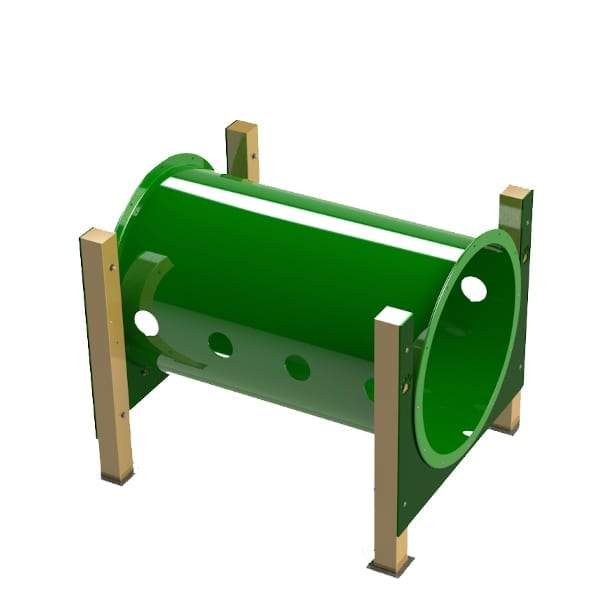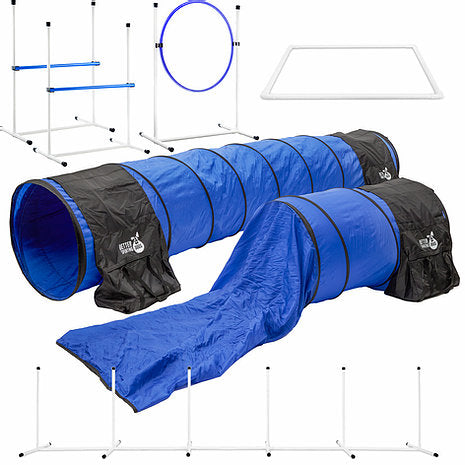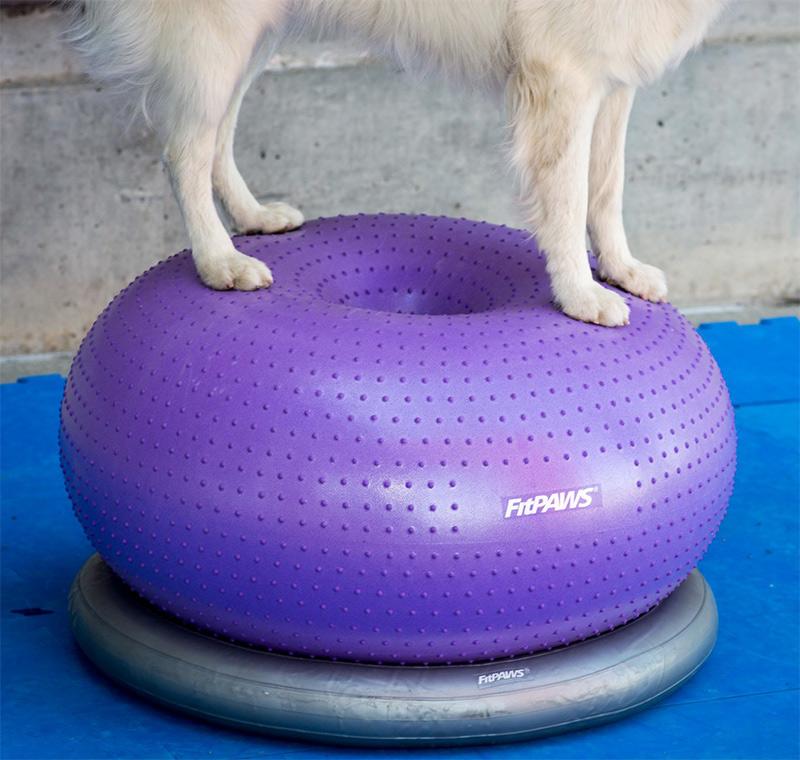Agility and Other fun Activities for Trust-building
Play-training your dog provides an alternative to the violence that conventional training methods inflict on the minds and bodies of dogs. Traditional training uses punishment and reward but that's not the best way to train. Training is supposed to build trust, not fear.
All dogs are born with innate play skills. Unless a puppy suffers from a neurological disorder, play is part of how he's wired.
A litter of 4- to 6-week-old puppies start interacting with each other very differently when they get to this age. Previously most of their behavior was focused on eating and staying warm. Now play becomes paramount. Play develops motor skills, muscles, and social skills. The role of play for potential predators that need the ability to track, chase, and kill is critical.
Dog owners misread the language of dogs interacting with one another. Whether it's incorrectly defining innocent play as dangerous fighting or taking too lightly what is actually aggressive behavior, it is important to learn what dogs are saying to each other through their play.
Dog-to-dog play is a series of active and repetitive behaviors that have different meanings based on the circumstance. Dog play relies on the ability to read vocal and body signals. Dogs that do not have the opportunity to play with their siblings between the age of 4-8 weeks are usually deficient when it comes to communicating and identifying these signals. They learn dog manners though play. Through play they learn body slamming, mouthing too hard, mounting and generally causing mayhem can provoke negative reactions in others and often severe discipline from Mom.
How dogs Play:
- Play begins in puppyhood and helps puppies develop good coordination while allowing them to practice a series of exaggerated behaviors that promote social ease.
- Most young dogs learn how to play from their siblings and elders, but some, due to lack of social experience at a young age do not back down. They are unaware of the "rules".
- If a dog is pushy or plays too rough, the dog should not interact with other dogs until he or she learns to greet and play nicely.
- Teaching a reliable recall and calling the dog back before things get too rowdy will give him time to calm down before reintroducing him back into the group.
- Play sometimes looks very rough, particularly with larger breeds, but human intervention is usually not needed.
- Conflict is avoided as long as each dog allows the other to win and lose the game. The more aroused dogs become, however, the more likely it is that rough and tumble play turns into something more serious.
- Dogs with good social skills seek out other dogs to play with, maintaining order during play by using clear signals so that other dogs do not become confused about their motives.
Most dogs play safely with each other by relying on a series of cut off signals that communicate their peaceful intentions. Play bows, and displacement behaviors such as sniffing, sneezing, yawning, itching and licking occur for brief moments throughout play to communicate that any future action is still just play. If you are going to play train, you need to learn these signals and intrepret them correctly.
Agility as Play-training
Agility is a playful game. Dogs don't care if you win or lose, they only care how you play the game. It can be eye-opening to see the science of how dogs learn so that you can better understand how to teach agility to your dog. Think of learning as a pyramid, you must build the lower levels before attaining the peak.
- The bottom layer, that everything else builds on, is attention. Attention goes from handler to dog and back again.
- Consistency, the next layer, is critical to the dog's learning process, without consistency a dog's learning is slowed or stopped.
- The next layer is attitude and motivation. Are both you and your dog having fun? Fun can be exciting and excitement can lead to issues with self-control.
- Self-control is the fourth layer. For the dog and handler self-control are critical to an agility team's success.
- The top of the pyramid is the concept of win/win training. Ideally in all interactions both the handler and the dog win. With Agility the emphasis is on having fun and bonding with your dog while clicker training helps bring training to the highest level. Clicker training is used to challenge and process of shaping a behavior.
Social skills. Dogs that do not play with other dogs after they leave their litters often become reactive when they are around other dogs. Many also display inappropriate social skills, which can cause conflict when their behaviors alarm or annoy well-socialized dogs. All dog can benefit from early socialization with other dogs because they will always be surrounded by other dogs throughout their lives, particularly if they do organized obedience, agility, or go to dog parks just to play.
Relationships. Play is a relationship builder. Humans innately understand this and make the time to play games and sports with their children, but sometimes forget to play is necessary for a relationship with your dog. Our relationship with our dogs can be similarly fortified by playing with them. It can take some time to release the inner puppy in your dog if he never learned to play with humans when he was a pup. But it is well worth the effort. Daily play with your dog exercises him mentally and physically.
Coordination and muscle development. Play helps puppies and adults develop sprinting and chasing skills and the muscle to support those activities. Littermates often play keep-away, feinting, sprinting, ducking and stopping instantly, clumsily at first but with increasing finesse as they practice and mature. We need to continue the development and maintenance of these physical skills when we play with our dogs.
Play training. Every training session should feel like play to the dog. This ensures a positive association with training and accelerates learning. Training is not just barking commands expecting the dog to 'obey'. Anything taught should ends in a game of tug or fetch, a treat or play of some kind which will result in a dog that loves to do Sit-Stays and sees it as just another game.
Powerful reinforcer. Play is a powerful reinforcer when used correctly. It is common to see people throwing a ball over and over again or tugging intensely for long periods of time attempting to wear out their energetic dog. However, long periods of free-for-all play may cause arousal levels that interfere with his ability to control himself, causing him to do what he wants and be too distracted to listen.
Another downside of free-for-all play is that the dog does not learn to work for the toy or play as a reward. Instead, use the toy as a reward for Sit-Stays, Down on the table, hitting the contact zone, and so on. How do you do this? You choose a toy that is available only when you play with your dog. The toy might be a long, soft fleecy toy with a squeaker for example. Find out your dog's trigger. For many dogs, a toy that slithers along the floor is irresistible – especially if it squeaks. Don’t leave this toy out for your dog to entertain himself, use it for training only.
Don't push the toy in your dog’s face. Instead, play with it yourself - remember when you were a child and had that coveted toy everyone wanted? This is the dog version of that. Drag it away from your dog and then pounce on it. Pretend to have a grand time! Build his interest and then give him a chance to hold it. Keep your play sessions short and fun. Keep at it until you can’t seem to keep your dog away from the toy as soon as it appears.
At this point you can use the toy as a reward. Now that your dog is obsessed with the toy, ask him for a simple behavior and use the toy as the reward. Gradually increase your expectations. You might ask for several spins in a row or a longer Sit-Stay. Many dogs will play at home but not in class or at a trial. If you want to transfer any training skill, including play, you need to practice in a variety of locations with a variety of distractions. This can be the most challenging part of play training and many people give up and revert to food as a reward. Try to stick with it and gradually build up your dog’s desire to play with you no matter where you are and no matter what else is going on.
There are many dog sports people engage in with their dogs - hunting activities, flyball, obedience, rally and others but Dog agility seems to cover so many bases. The American Kennel Club and United Kennel Club do much to promote many of these activities. If you would like to get started, contact a local obedience instructor or contact the AKC or UKC offices in your area.
Agility is a sport for canines in which a handler directs a dog through a variety of obstacles such as a tunnel, teeter-totter, tire jump, weave poles, pause table, and standard jumps. During competitive agility events, handlers attempt to navigate dogs through a course as quickly and as accurately as they can. Use play-training to achieve your goals, and you'll have a dog that loves agility and so will you! Why agility? There are many reasons as there are dogs, but it tends to fulfill many things your dog needs.
Natural instincts
In the wild, dogs are natural hunters, chasing and running after a variety of prey. While in pursuit of food, dogs must often follow critters through a forest and navigate though a variety of barriers. They jump over fallen logs, climbing up steep slopes, and squeezing through bushes and vegetation. Since the end goal is to catch up with prey, time is of the essence and the faster a dog runs, the better their chances of ending up with a meal. Agility courses are designed to mimic these types of natural scenarios and fulfill the hunting and chasing desires of your dog.
Great Exercise
Agility is a great way to get rid of your dog’s excess energy. Running through a course that involves passing over and through a variety of obstacles will challenge your dog’s mind and body. Involving your dog in agility will help to strengthen his muscles, improve coordination, keep him fit, and increase endurance - as well as challenge his mind. You, the handler, will run alongside your dog, and assisting him with soaring over jumps, weaving through poles, and crawling out of collapsed tunnels - giving guidance. While you and your dog compete to swiftly finish the course, you will be treated to a heart-healthy cardiovascular workout and a dog that feels more bonded to you than ever because doing this strenthens the trust and bond between you and your dog.
Agility courses are set up so that dogs would not be able to complete them without the help of the handler. This is done on purpose. As the dog must rely on the verbal and hand instructions from the handler in order to navigate the course in the proper order, the trust between owner and dog will be increased. Helping your dog to pass through agility obstacles will help reinforce basic obedience commands, improve dog/owner communication, and ultimately help to improve your dog’s behavior outside of the agility course.






























